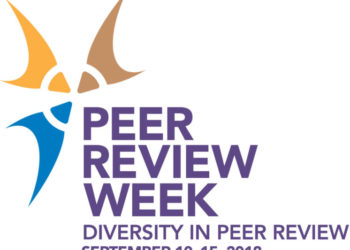In early January, Cell Press announced that they were introducing a new Inclusion and Diversity Statement, similar to existing statements about Declarations of Interest, Author Contributions, and Data and Code Availability, but focusing on aspects of an article that are relevant for inclusion and diversity. One month on, their Vice President of Editorial, Deborah Sweet, kindly agreed to answer my questions about what the Statement is, why and how it’s being implemented, what they hope to achieve, and how it’s been received in the Cell Press community and beyond.

Please can you tell us a bit about the Inclusion and Diversity Statement – what is it, how and why did Cell Press decide to develop it?
The basic concept is that we are giving our research article authors an opportunity to share information about a broad range of areas related to inclusion and diversity, with us and with the scientific community. To achieve this, as their paper gets close to publication, we are asking them to complete a straightforward check box-based form that asks about a series of different topics related to inclusion and diversity. We will collate this information periodically so we can report in an aggregated way about the items covered on the form. In addition, authors can choose to use the information on the form to put together an inclusion and diversity statement that will appear in the paper itself. I want to emphasize that all participation is completely voluntary. While we will collect a completed form for all accepted articles, the authors choose whether to provide any information at all on the form, as well as whether to add a statement to their paper. Obviously, we hope that many of our authors will opt to participate.
The idea for this overall initiative developed over time, through a number of strings coming together. Over the past year, as an organization, we have done a lot to highlight issues related to inclusion and diversity in a variety of forms, starting with gender balance and moving on to other issues related to social justice. The global events last year were, quite honestly, a wake up call for us, and made us at Cell Press recognize that we, like many organizations, are part of the problem. This experience spurred numerous helpful conversations with members of the research community and other advocates. We have been fortunate to publish a broad range of articles and opinion pieces, many of which are very powerful, for example this personal commentary from Dr. Kafui Dzierasa published last year and a recent piece from a group of BME women faculty about long-standing NIH funding disparities. We are also proud to have launched our Rising Black Scientists Awards. We heard a lot from the community about how much visible representation matters and makes a difference. Some of our journals published articles about statements on gender representation in reference lists (Neuron, Trends in Cognitive Sciences), and we received a suggestion that we could ask authors to make a commitment to inclusion and diversity during the article submission process. These were all interesting ideas, but we thought it would be more powerful and effective to do something that would be broad-based and would actually be seen by readers of the paper, to provide visibility of representation, and that led to the initial idea of a statement in the paper. We then worked for several months to develop the process that we announced in early January.
The Statement takes a two-pronged approach to highlighting diversity and inclusion — how it’s been incorporated into the research being described, and how it’s reflected in the authors of the study. Why was this important to Cell Press?
We chose this approach because we think both of these areas are equally important. We did consider whether we should try to address only one, and, in our (quite extensive) consultations about our ideas, some of the feedback we got even suggested that one or the other would be better or more important to address. However, we ultimately decided we could and should address both, and that collecting information about both would be interesting and important, so we created a reporting form with two separate sections.
Authors won’t be required to submit the form until after their manuscript has been accepted so reviewers won’t be able to take this information into account. What’s the reasoning behind that?
We want to make sure there is no possibility that this information will influence the scientific assessment of the paper, and that nobody will even think that might be the case. The review process should be based only on the scientific content and merit. We also don’t want authors to feel in any way pressured to provide information, or to think that their paper might be treated differently based on whether they do or not. There is, of course, an argument that information about inclusion and diversity considerations in the research approach should, in fact, be one of the factors that is weighed during the review process, and in future perhaps this information will be requested earlier in the process — during the initial submission even. But, for now at least, we will be collecting the forms at the acceptance stage to ensure that it is not in any way perceived as being part of the manuscript assessment.
How will you be using the data you collect? What do you hope to learn from it?
We want to use the data to report on what our authors are doing. At a basic level we want to know how many author teams choose to provide information at all, and how many also choose to include a statement about it in their paper. We also want to be able to report on how many author groups answer each of the specific questions we ask (for example, how many took steps to avoid “helicopter science” and how many indicate that the author team includes at least one minority scientist). Sharing this sort of information with our broader readership — and authors — could be very powerful in terms of demonstrating levels of representation. I would also, of course, hope to see increases in adoption of the Statement over time — both in terms of uptake and, particularly, in reporting about inclusion and diversity. But this is not something we at Cell Press can do alone; to really make a difference the whole research enterprise needs to do more to embrace these concepts and push for change.
What has the reaction been to the launch of the Inclusion and Diversity Statement, and how are you planning to measure its success?
Overall we have been really happy with the reaction and feedback we have received. Several researchers have indicated how much they appreciate the initiative and our broader activities around inclusivity and anti-racism. It’s clear that people in the research community — particularly those in the demographic groups that we are very much hoping to both reach and support — have noticed the efforts we are making. There has also been critical feedback, some of which was due to misunderstanding of the process or intent, which we clarified. We will take on board all feedback as we think about how to further improve the process going forward. On a positive note, authors started to embrace the concept and include statements in their papers straight after our initial announcement — even before we put in place the relevant requests in the information we send them. So, I take that as a good sign that there is enthusiasm overall! Success for us, in the short term at least, is very tied to author uptake and community reactions.
Are you concerned at all about negative repercussions or unintended consequences?
Yes, we are, we’ve given these topics a lot of thought. Some of the issues we are trying to address are very sensitive, and we completely understand that people might have reservations about revealing information or be concerned that it could negatively impact them in the future. But we hope we have mitigated against that in a number of ways. First, as indicated above, participation is completely optional, in terms of both providing information and adding a statement to the paper. Second, we are collecting information and reporting at the research group level only, not at the individual level, which provides a certain degree of anonymity for anyone who does provide this information. Third, we are using a standardized set of phrases that are designed to be quite general and neutral in terms of the way they are presented — to provide basic information, but not details. We realize there is a (hopefully small) risk that a team leader could pressurize a junior group member to include information against their will, so we emphasize throughout that all authors should feel free to make their own personal choice about whether, and if so how much, to participate.
Would you like to see your Inclusion and Diversity Statement rolled out more widely? Could you see it becoming the basis for an industry standard?
We would love it if that happened! We see this initiative as being in principle similar to something like a data availability statement or an author contributions statement, where many publishers embrace the overall concept while adapting it to the needs of their specific publications and communities. We have already had some interest from other journals and are happy to share our approach and process with anyone who would like to know more (email diversity@cell.com). We can already see that these will need to be adapted to meet the needs of different journals and disciplines, particularly in terms of the questions related to research process elements, because the options we are providing as a STEM publisher will not be relevant for every field.
We also hope to work with our manuscript system provider (Aries Systems I hope you are reading this!) to devise a system that would allow us to gather the information in a more integrated and automated way, rather than relying on a form. If we can, then this would also increase the opportunities for other publishers to adopt a similar approach.
How do you see the Statement fitting in with other DEI initiatives in scholarly communications — are there opportunities for cooperation?
I would very much hope so, yes. Cell Press is not the only organization in the publishing industry to care about inclusion and diversity — many other organizations are also working to try to bring about positive change. For example, we are involved in industry-wide discussions about author name changes, which have developed from important updates to policies related to name changes for transgender scientists.
New York Times reporter, Katherine Wu, made an excellent point when she highlighted that, while many of us want to drive change, we have very little data to actually tell us if we are being successful — and it is often impossible to get relevant data without actually asking the people involved. Our approach is designed to help us gather basic data without the need to ask for detailed individual-level information, which is difficult to do in an inclusive way and also, frankly, legally challenging to navigate. We hope that our Statement initiative will inspire others to take a similar approach, even if they don’t adopt the exact same system. And if any of you have comments on what we’re doing, or ideas about a better way to do it we would love to hear from you!
Discussion
2 Thoughts on "The Cell Press Inclusion and Diversity Statement — An Interview with Deborah Sweet"
Thanks, Debbie and Alice! I’m excited to see this and will be particularly interested to see the ongoing data from and feedback about the form.
Perhaps Cell can respond to the social justice issues raised about pricing, by Grossman and Brembs. https://f1000research.com/articles/10-20/v1



